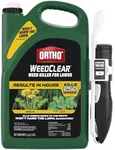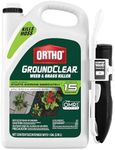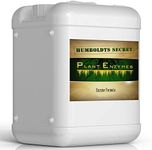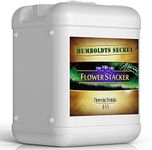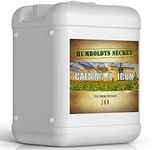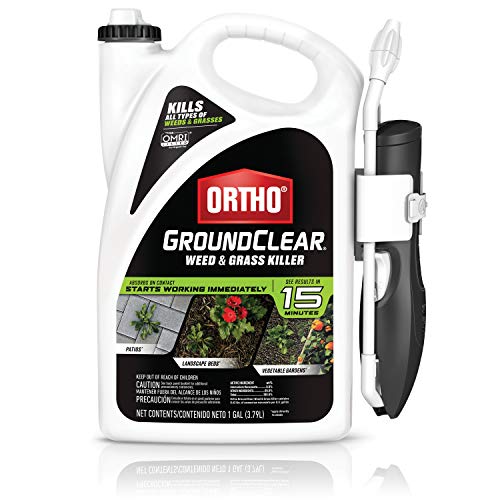Buying Guide for the Best Weed And Crabgrass Killers
Choosing the right weed and crabgrass killer can make a significant difference in maintaining a healthy and beautiful lawn or garden. The key is to understand the different specifications and how they align with your specific needs. Here are some important factors to consider when selecting a weed and crabgrass killer.Type of Weed KillerWeed killers come in two main types: selective and non-selective. Selective weed killers target specific types of weeds without harming other plants, making them ideal for lawns and gardens where you want to preserve the surrounding vegetation. Non-selective weed killers, on the other hand, kill all plants they come into contact with and are best used for clearing areas completely, such as driveways or walkways. Choose a selective weed killer if you need to protect your grass and other plants, and a non-selective one if you need to clear an area entirely.
Application MethodWeed and crabgrass killers can be applied in various ways, including sprays, granules, and concentrates. Sprays are easy to use and allow for targeted application, making them suitable for spot treatments. Granules are spread over a larger area and are ideal for treating entire lawns. Concentrates need to be mixed with water and are often more economical for large areas. Consider the size of the area you need to treat and your preference for application when choosing the method.
Active IngredientsThe active ingredients in weed killers determine their effectiveness and the types of weeds they can control. Common active ingredients include glyphosate, which is effective against a wide range of weeds, and 2,4-D, which targets broadleaf weeds. Understanding the specific weeds you are dealing with will help you choose a product with the right active ingredients. If you are unsure, look for a broad-spectrum weed killer that covers a wide range of weed types.
Pre-Emergent vs. Post-EmergentPre-emergent weed killers prevent weeds from germinating and are best applied before weeds appear, typically in early spring. Post-emergent weed killers target weeds that have already sprouted and are visible. If you are dealing with an existing weed problem, a post-emergent product is necessary. For preventing future weed growth, a pre-emergent product will be more effective.
Safety and Environmental ImpactConsider the safety of the product for humans, pets, and the environment. Some weed killers contain chemicals that can be harmful if ingested or if they come into contact with skin. Look for products that are labeled as safe for use around children and pets if this is a concern. Additionally, consider the environmental impact of the product, especially if you are using it near water sources or in areas frequented by wildlife. Organic or natural weed killers are available and may be a better choice for environmentally conscious users.
RainfastnessRainfastness refers to how quickly a weed killer becomes resistant to being washed away by rain. This is important because if it rains soon after application, the effectiveness of the product can be reduced. Check the label for information on how long the product needs to dry before it becomes rainfast. If you live in an area with frequent rain, choosing a product with a shorter rainfast period can ensure better results.




